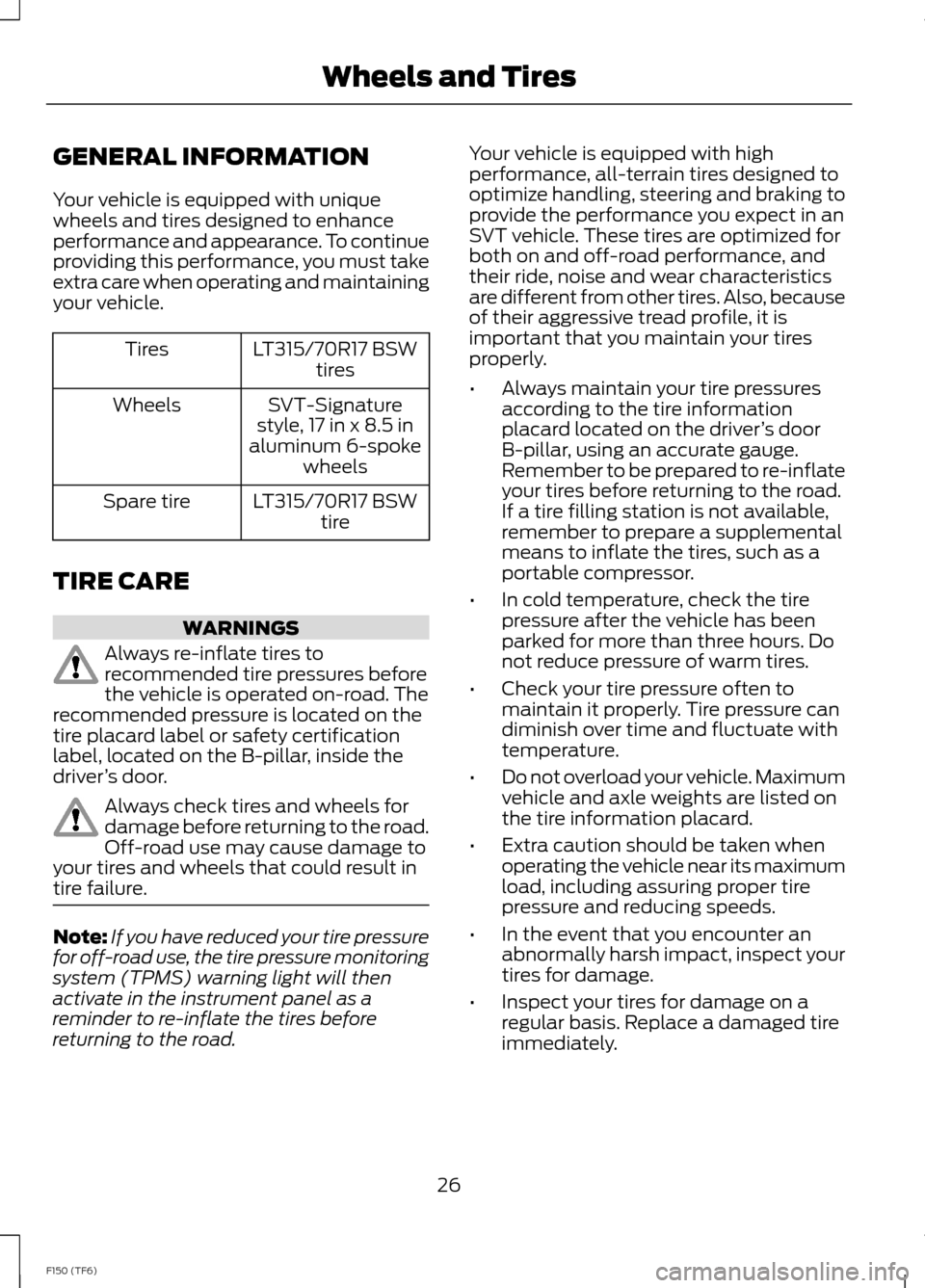TPMS FORD F150 2014 12.G Raptor Supplement Manual
[x] Cancel search | Manufacturer: FORD, Model Year: 2014, Model line: F150, Model: FORD F150 2014 12.GPages: 41, PDF Size: 4.4 MB
Page 28 of 41

GENERAL INFORMATION
Your vehicle is equipped with uniquewheels and tires designed to enhanceperformance and appearance. To continueproviding this performance, you must takeextra care when operating and maintainingyour vehicle.
LT315/70R17 BSWtiresTires
SVT-Signaturestyle, 17 in x 8.5 inaluminum 6-spokewheels
Wheels
LT315/70R17 BSWtireSpare tire
TIRE CARE
WARNINGS
Always re-inflate tires torecommended tire pressures beforethe vehicle is operated on-road. Therecommended pressure is located on thetire placard label or safety certificationlabel, located on the B-pillar, inside thedriver’s door.
Always check tires and wheels fordamage before returning to the road.Off-road use may cause damage toyour tires and wheels that could result intire failure.
Note:If you have reduced your tire pressurefor off-road use, the tire pressure monitoringsystem (TPMS) warning light will thenactivate in the instrument panel as areminder to re-inflate the tires beforereturning to the road.
Your vehicle is equipped with highperformance, all-terrain tires designed tooptimize handling, steering and braking toprovide the performance you expect in anSVT vehicle. These tires are optimized forboth on and off-road performance, andtheir ride, noise and wear characteristicsare different from other tires. Also, becauseof their aggressive tread profile, it isimportant that you maintain your tiresproperly.
•Always maintain your tire pressuresaccording to the tire informationplacard located on the driver’s doorB-pillar, using an accurate gauge.Remember to be prepared to re-inflateyour tires before returning to the road.If a tire filling station is not available,remember to prepare a supplementalmeans to inflate the tires, such as aportable compressor.
•In cold temperature, check the tirepressure after the vehicle has beenparked for more than three hours. Donot reduce pressure of warm tires.
•Check your tire pressure often tomaintain it properly. Tire pressure candiminish over time and fluctuate withtemperature.
•Do not overload your vehicle. Maximumvehicle and axle weights are listed onthe tire information placard.
•Extra caution should be taken whenoperating the vehicle near its maximumload, including assuring proper tirepressure and reducing speeds.
•In the event that you encounter anabnormally harsh impact, inspect yourtires for damage.
•Inspect your tires for damage on aregular basis. Replace a damaged tireimmediately.
26F150 (TF6)Wheels and Tires